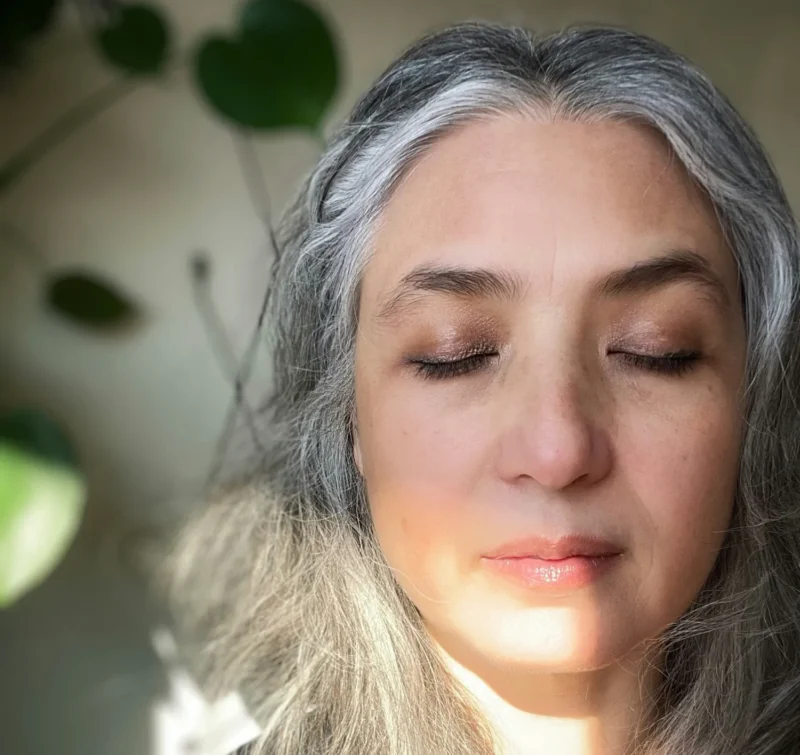
ADHD in Women: Why It’s Missed & What to Know
If you’re a woman who’s always felt disorganised, overwhelmed, or like you’re constantly working harder than everyone else just to keep up, you might have wondered if something deeper is going on. Maybe you’ve been told you’re “too emotional,” anxious, or just need to try harder.
What if the real answer is ADHD?
Attention deficit hyperactivity disorder (ADHD) is estimated to affect one in 20 children in Australia. But here’s the problem: even though ADHD has historically been diagnosed more commonly in boys than girls, experts say this isn’t because girls are less affected. Instead, ADHD in women and girls often presents with symptoms that are more socially acceptable and easier to overlook.
The result? Countless Australian women and girls are living with undiagnosed ADHD, struggling with symptoms they don’t understand, and being misdiagnosed with anxiety or depression when the root cause is something entirely different.
Why ADHD in girls and women looks different
ADHD isn’t a one-size-fits-all condition. While boys with ADHD are often the stereotypical hyperactive kid disrupting the classroom, girls with ADHD typically present very differently.
Research shows that females with ADHD were underdiagnosed for many years, partly because their unique presentation meant they met fewer diagnostic criteria. The key difference? Girls tend to have the inattentive type of ADHD, while boys more commonly have the hyperactive or impulsive type.
What inattentive ADHD actually looks like:
- Being easily distracted or appearing to daydream
- Feeling overwhelmed by tasks and struggling to start them
- Chronic disorganisation despite desperate attempts to stay on top of things
- Difficulty following conversations or instructions
- Mental restlessness rather than physical hyperactivity
- Struggling with time management and constantly running late
Girls with inattentive ADHD might be described as daydreaming or zoning out, leading others to believe they’re uninterested or lazy. Teachers might say they’re “not working to their potential.”
The problem? None of these symptoms cause classroom disruption. They’re internal struggles that go unnoticed until the demands of life become too much to manage.
The masking problem: Why smart girls go undiagnosed
ADHD masking involves developing coping mechanisms to hide symptoms, making them harder to spot. It’s more common in women than in men.
Girls and women with ADHD might work twice as hard as their peers to achieve the same results, use excessive reminders and organisational systems, develop perfectionistic behaviours, or hide their struggles from others out of shame.
This constant effort to appear “normal” is exhausting and often leads to burnout. These compensatory behaviours may also prevent referral for assessment.
When ADHD finally becomes impossible to hide
Girls with ADHD can often go undetected until academic and organisational demands increase in late primary and high school. For many women, diagnosis doesn’t come until adulthood (the mean age is 32.7 years), often triggered by major life transitions.
Common triggers include the shift from high school to university, becoming a new parent, or assuming demanding job roles. A common pathway for late diagnosis is when a child is diagnosed, and mothers start to recognise their own symptoms.
What changes? The coping strategies that worked for years suddenly aren’t enough. The organisational demands increase beyond what can be managed with willpower alone. The exhaustion from masking becomes unsustainable.
The misdiagnosis problem: When anxiety and depression hide ADHD
Symptoms of ADHD in females are often reflected in mood or emotional dysregulation, making diagnosis quite difficult. This often leads to misdiagnosis with mood disorders, anxiety disorders, or depression.
ADHD can be mistaken for anxiety because they share similar symptoms. For example, if you’re anxious about something, you also can’t focus. Women exhibiting combined symptoms with high energy and impulsivity could be misdiagnosed with bipolar disorder.When a misdiagnosis is made, this leads to inadequate or postponed treatment. Anxiety, depression, and burnout often take centre stage in women with undiagnosed ADHD, appearing as prominent symptoms. However, these challenges very often stem from underlying executive functioning difficulties associated with ADHD.
The real impact: What undiagnosed ADHD does to women’s lives
The consequences of missed or late ADHD diagnosis extend far beyond difficulty focusing or staying organised.
Research shows that women with ADHD continue to experience lower self-esteem and more anxiety than women without ADHD. When girls are not diagnosed and form their own interpretation of their behaviour, they may become highly self-critical, not realising their challenges are symptoms of ADHD.
Studies demonstrate that girls and women with ADHD tend to be more impaired in peer functioning and interpersonal relationships. Girls aged 6 to 12 with ADHD had fewer friends, less stable friendships, and more conflicts than girls without ADHD. This extends to lower satisfaction with romantic relationships and lower self-esteem in adulthood.
Research consistently shows increased school dropout and academic underachievement in females with ADHD. However, girls may work hard to maintain classroom performance, and satisfactory academic achievement does not rule out ADHD. A girl might be struggling intensely but achieving adequate grades.
The research also reveals other patterns: females with ADHD tend to become sexually active earlier, have increased rates of sexually transmitted infections and unplanned pregnancies, and elevated risk of substance use disorders. These are risks associated with impulsivity that often go unrecognised as ADHD-related.
Hormones, ADHD, and the female experience
One of the most under-researched areas is how hormonal fluctuations affect symptoms in women and girls.
ADHD symptoms can intensify at different points in a woman’s life due to the way that oestrogen plays a role in dopamine regulation (during puberty, pregnancy, postpartum, and especially in perimenopause and menopause). Levels of oestrogen and progesterone fluctuate throughout the menstrual cycle and differently influence the effect of stimulant drugs at different points of the month.
Emerging research suggests that cycle tracking apps can help women find links between their ADHD symptom patterns and hormonal fluctuations. Some women experience particularly severe symptoms, including PMDD (Premenstrual Dysphoric Disorder).
Treatment options: What actually works for women with ADHD
Pharmacotherapy is currently the first-line treatment in the management of ADHD symptoms. Studies have shown that medication is effective in reducing core ADHD symptoms, improving daily functioning, and may have a positive impact on self-esteem.
However, women with ADHD were significantly less likely to be prescribed pharmacotherapy than men with this disorder. Young girls were more likely than boys to receive no medication at all. Research suggests important sex differences in medication response:
Atomoxetine (Non-Stimulant): Women improved significantly more on hyperactivity, impulsivity, and emotional dysregulation when using Atomoxetine compared to men. This may be a promising medication for girls and women with ADHD.
Methylphenidate (Ritalin, Stimulant): Girls and women showed less improvement in inattention than males, and the effect wore off earlier in the day, suggesting single daily dosing may not be optimal for females.
Medication can be life-changing for some, but it’s not a complete resolution. Many women find that a combination of ADHD coaching, lifestyle changes, and building a strong support network makes a world of difference.
At Seed Psychology, we work with women navigating ADHD diagnosis and treatment, helping you build practical strategies that work for your specific brain and circumstances.
How to get assessed for ADHD in Australia
The Royal Australian and New Zealand College of Psychiatrists noted that gender stereotypes currently contribute to the under-recognition of ADHD in females.
If you suspect you or your daughter might have ADHD, here’s what you need to know about getting assessed.
Signs that warrant assessment
- Poor peer relationships
- Anxiety
- Self-esteem issues
- Inattention
- Emotional reactivity
- Decreased self-esteem
- Academic difficulties
- Risky behaviour may be clues to the impact that ADHD symptoms are having.
The assessment process
If you think you might have ADHD you can talk to a doctor. They can check your symptoms and refer you to a psychiatrist or psychologist if needed. If you don’t feel like you’re getting the right support, you can always seek a second opinion.
There are screening tools like the Adult ADHD Self-Report Scale (ASRS), but these should be followed up with professional consultation. It’s crucial to consult with a professional who has a specialised focus on ADHD.
You can also find directories at ADHD Support Australia or call the ADHD Helpline on 1300 39 39 19.
The negative impacts of undiagnosed ADHD can be considerable and include self-critical beliefs, burnout, exhaustion, misdiagnosis, and lack of access to appropriate treatment.
Moving forward: Recognition and support
Receiving a diagnosis can be life-changing.
If you’re a woman who has spent years feeling like you’re failing at basic adulting, struggling with organisation, overwhelmed by emotions, or watching your daughter experience similar challenges, it’s worth exploring whether ADHD might be the missing piece of the puzzle.
Understanding that your brain works differently isn’t an excuse. It’s an explanation that opens the door to appropriate support, treatment, and self-compassion.
Our team at Seed Psychology understands the unique presentation of ADHD in women and girls. We offer in-person sessions in Brunswick East and online appointments throughout Victoria to support you through assessment, diagnosis, and building strategies that work for your life.
Frequently asked questions
What are the main signs of ADHD in women?
ADHD in women typically presents as inattention rather than hyperactivity. Signs include chronic disorganisation, feeling overwhelmed by tasks, difficulty managing time, being easily distracted, forgetfulness, emotional dysregulation, and struggling to maintain focus. Many women describe feeling like they’re working twice as hard as everyone else just to keep up.
Why do girls with ADHD get diagnosed later than boys?
Girls tend to have the inattentive form of ADHD, which manifests as daydreaming or zoning out, leading others to believe they’re uninterested or lazy. Unlike hyperactive behaviours common in boys, these symptoms don’t disrupt classrooms. Girls also tend to be better at masking their symptoms and adapting to fit in.
Can you have ADHD if you did well in school?
Absolutely. Satisfactory academic achievement does not rule out ADHD in girls. Many women with ADHD were high achievers who compensated through excessive effort, perfectionism, and coping strategies. The internal struggle often isn’t visible until demands increase during university, career advancement, or parenthood.
Is ADHD different during your menstrual cycle?
Yes. ADHD symptoms can intensify due to how oestrogen plays a role in dopamine regulation. Hormone levels fluctuate throughout the menstrual cycle and differently influence medication effects. Cycle tracking apps can help women find links between their ADHD symptom patterns and hormonal fluctuations.
What’s the difference between ADHD and anxiety in women?
ADHD can be mistaken for anxiety because they share similar symptoms. However, anxiety, depression, and burnout often stem from underlying executive functioning difficulties associated with ADHD. A professional experienced in ADHD can help differentiate between primary anxiety and anxiety resulting from undiagnosed ADHD.
Do medications work differently for women with ADHD?
Yes. Women improved significantly more when using Atomoxetine (a non-stimulant) for hyperactivity, impulsivity, and emotional dysregulation. With methylphenidate (Ritalin), girls and women showed less improvement in inattention, and the effect wore off earlier in the day, suggesting single daily dosing may not be optimal for females.
Where can I get assessed for ADHD in Australia?
Start by talking to your GP, who can refer you to a psychiatrist or psychologist experienced in ADHD assessment. Call the ADHD Helpline on 1300 39 39 19 for recommendations. At Seed Psychology, we work with women seeking assessment and support. Book an appointment or call 03 9388 8113.
What should I do if I suspect my daughter has ADHD?
Look for signs beyond hyperactivity: Does she daydream frequently? Struggle with organisation despite trying hard? Have difficulty with friendships? Experience anxiety or low self-esteem? Girls with ADHD can often go undetected until demands increase in late primary and high school. Speak with her teacher, document specific behaviours, and seek assessment from a professional experienced in identifying ADHD in girls.
References
Quinn, P. O., & Madhoo, M. (2014). A review of attention-deficit/hyperactivity disorder in women and girls: Uncovering this hidden diagnosis. The Primary Care Companion for CNS Disorders. Retrieved from https://legacy.psychiatrist.com/pcc/neurodevelopmental/adhd/review-attention-deficit-hyperactivity-disorder-women/
Sasmaz, M. I., Kara, S., Öztürk, M., Başay, Ö., & Kırlangıç, G. (2020). The female side of pharmacotherapy for ADHD—A systematic literature review. PLOS ONE, 15(10), e0239257. Retrieved from https://journals.plos.org/plosone/article?id=10.1371/journal.pone.0239257
Young, S., Asherson, P., Lloyd, T., Absoud, M., Arif, M., Colley, B., … & Woodhouse, E. (2020). Females with ADHD: An expert consensus statement taking a lifespan approach providing guidance for the identification and treatment of attention-deficit/hyperactivity disorder in girls and women. BMC Psychiatry, 20, 404. Retrieved from https://link.springer.com/article/10.1186/s12888-020-02707-9







